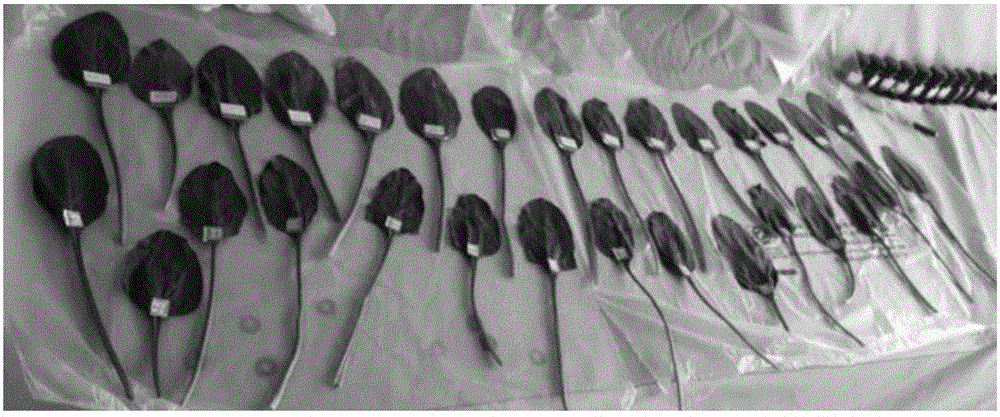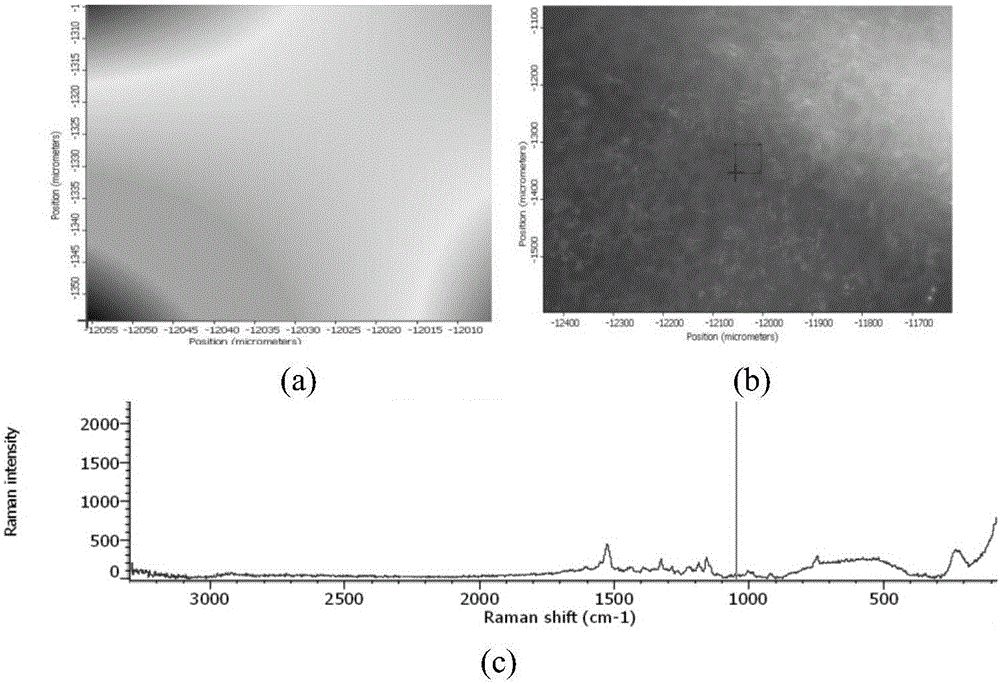Non-destructive detection method for pesticide residues in fruits and vegetables
A non-destructive testing and pesticide residue technology, applied in measuring devices, instruments, and material analysis through optical means, can solve problems such as inappropriate on-site detection of pesticide residues, difficult and complex detection methods, etc., and achieve information volume and complexity The effect of increasing, increasing the difficulty of distinguishing, and removing material interference
- Summary
- Abstract
- Description
- Claims
- Application Information
AI Technical Summary
Benefits of technology
Problems solved by technology
Method used
Image
Examples
Embodiment 1
[0049] Example 1: SERS non-destructive detection of pesticide residues on the surface of spinach
[0050] 1. Experimental materials
[0051] Deltamethrin pesticide: emulsifiable concentrate preparation, active ingredient content is 25g / L, purchased from Bayer Crop Science (China) Co., Ltd., Germany, production date 2016 / 3 / 2; surface enhancer: Easy Peak (Shufeng TM) scientific research type No. 2 silver sol, purchased from Shanghai Nateng Instrument Co., Ltd.; spinach: commercially available, with uniform leaf size and color.
[0052] 2. Sample Preparation
[0053] According to the provisions of the national standard GB 2763-2014 on the maximum residue limits of pesticide residues in food, the deltamethrin content in spinach should not exceed 0.5mg / kg, so the experimental implementation plan is as follows:
[0054] Prepare 15 standard solutions of deltamethrin with different concentrations, using deionized water as solvent, 25g / L deltamethrin EC as solute, and the mass fracti...
Embodiment 2
[0070] Example 2: Non-destructive testing of multiple pesticide residues on the surface of apples
[0071] 1. Experimental materials
[0072] Chlorpyrifos, malathion, and imidacloprid are three pesticide standard substances, the standard value of which is 1.0mg / ml, all purchased from the Institute of Standard Materials, China Institute of Metrology; surface enhancer: Easy Peak (Shufeng TM) scientific research type 2 Silver sol, purchased from Shanghai Nateng Instrument Co., Ltd.; Fuji apple: commercially available, uniform in shape, size and color.
[0073] 2. Sample Preparation
[0074] Three pesticide standard substances, chlorpyrifos, malathion and imidacloprid, were used as residues to prepare pesticide residue samples. Six commercially available Fuji apples with uniform shape and size were selected to add the three kinds of pesticide residue samples respectively. A sample of pesticide residues can be used to explore the influence of the background on the modeling later....
PUM
 Login to View More
Login to View More Abstract
Description
Claims
Application Information
 Login to View More
Login to View More - R&D
- Intellectual Property
- Life Sciences
- Materials
- Tech Scout
- Unparalleled Data Quality
- Higher Quality Content
- 60% Fewer Hallucinations
Browse by: Latest US Patents, China's latest patents, Technical Efficacy Thesaurus, Application Domain, Technology Topic, Popular Technical Reports.
© 2025 PatSnap. All rights reserved.Legal|Privacy policy|Modern Slavery Act Transparency Statement|Sitemap|About US| Contact US: help@patsnap.com



